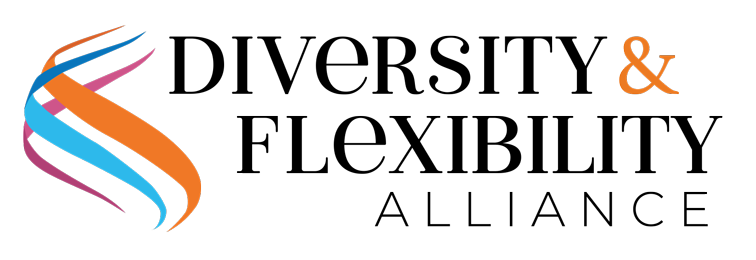The Diversity & Flexibility Alliance is a think tank dedicated to creating work environments centered on inclusion and innovative thought leadership. The Alliance empowers organizations with the tools necessary for advancing women, fostering flexibility, and retaining top talent.
To learn how we can help your organization, please get in touch.

Action Step – Leveraging Generational Differences
The Alliance’s Action Steps are designed to assist organizations with implementing practical strategies and policies related to diversity and flexibility. Members can access full versions of all of the Alliance’s Action Steps in the Member Resource Center.
With five generations working side-by-side, there’s a lot of talk about generational differences and how that affects work preferences. Expert Chris DeSantis recently led a very informative “Embracing Generational Diversity” Signature Seminar for the Alliance, during which he discussed generational perspectives and how these different perspectives can be beneficial to a team. With so many generations in the workplace, it is truly in everyone’s best interest to work respectfully with each other to leverage everyone’s strengths. We discuss a framework below to help cross-generational teams work successfully.
Members: continue reading this Action Step in the Member Resource Center
To read this entire Action Step become a member of the Diversity & Flexibility Alliance. To learn more contact Manar Morales.
Action Step – Leading Through Change
The Alliance’s Action Steps are designed to assist organizations with implementing practical strategies and policies related to diversity and flexibility. Members can access full versions of all of the Alliance’s Action Steps in the Member Resource Center.
Many organizations have faced a great deal of change over the last few years, including: the pandemic; a new way of working; economic growth and a war for talent; recession/inflation concerns and layoffs; tightening of hybrid work; and reorganizations. Organizations that navigate through these changes systematically and intentionally fare much better. Take a look at the Alliance’s framework for how to successfully lead through change:
Members: continue reading this Action Step in the Member Resource Center
To read this entire Action Step become a member of the Diversity & Flexibility Alliance. To learn more contact Manar Morales.
Action Step – Organizational Solutions to Foster Well-Being
The Alliance’s Action Steps are designed to assist organizations with implementing practical strategies and policies related to diversity and flexibility. Members can access full versions of all of the Alliance’s Action Steps in the Member Resource Center.
Since the pandemic, organizations have increased their acceptance of workplace flexibility significantly. Greater workplace flexibility has many business benefits, including improved well-being. However, organizations need to invest in a number of additional solutions to truly enhance well-being. As with workplace flexibility, employee well-being has numerous far-reaching organizational benefits, including better productivity and engagement. Our recommendations regarding critical
organizational solutions to truly move the needle on employee well-being are as follows:
Members: continue reading this Action Step in the Member Resource Center
To read this entire Action Step become a member of the Diversity & Flexibility Alliance. To learn more contact Manar Morales.